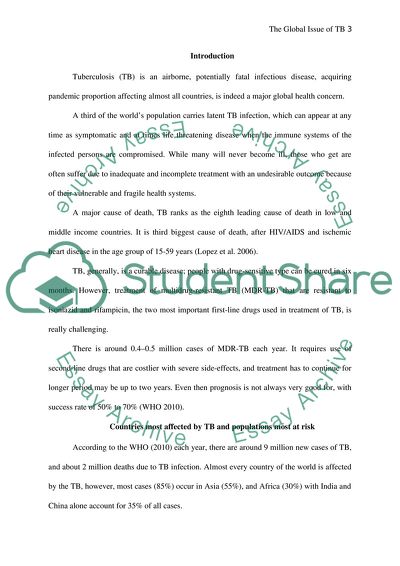Cite this document
(Global Issue of TB Assignment Example | Topics and Well Written Essays - 1500 words - 1, n.d.)
Global Issue of TB Assignment Example | Topics and Well Written Essays - 1500 words - 1. Retrieved from https://studentshare.org/nursing/1749948-describe-the-global-issue-of-tb-and-the-impact-it-has-on-the-health-system-of-the-most-affected-region
Global Issue of TB Assignment Example | Topics and Well Written Essays - 1500 words - 1. Retrieved from https://studentshare.org/nursing/1749948-describe-the-global-issue-of-tb-and-the-impact-it-has-on-the-health-system-of-the-most-affected-region
(Global Issue of TB Assignment Example | Topics and Well Written Essays - 1500 Words - 1)
Global Issue of TB Assignment Example | Topics and Well Written Essays - 1500 Words - 1. https://studentshare.org/nursing/1749948-describe-the-global-issue-of-tb-and-the-impact-it-has-on-the-health-system-of-the-most-affected-region.
Global Issue of TB Assignment Example | Topics and Well Written Essays - 1500 Words - 1. https://studentshare.org/nursing/1749948-describe-the-global-issue-of-tb-and-the-impact-it-has-on-the-health-system-of-the-most-affected-region.
“Global Issue of TB Assignment Example | Topics and Well Written Essays - 1500 Words - 1”, n.d. https://studentshare.org/nursing/1749948-describe-the-global-issue-of-tb-and-the-impact-it-has-on-the-health-system-of-the-most-affected-region.


